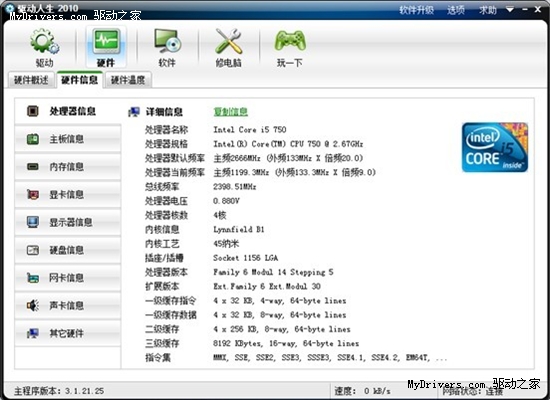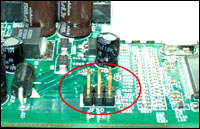/*************************/
/* author:大龄青年
/* email :[email protected]
/* from: http://blog.csdn.net/hahawen
/*************************/
原代码下载: http://club.phpe.net/index.php?s=&act=attach&type=post&id=29432
(近来帮许多网友改程序,发现一个问题,就是大家用php开发设计模式的非常的混乱,所以写下这篇文章,希望对大家都有帮助)
php作为“最简单”的web脚本语言, 在国内的市场越来越大,phper越来越多,但是感觉大多数人好像没有考虑到模式问题,什么样的设计模式才是最优的,才是最适合自己目前工作的,毕竟效率是最重要的(用省下的时间打游戏,多美啊...)。mvc应该是首选,www.sourceforge.net 上有好多优秀的基于mvc的开源项目,大家可以冲过去研究研究。
前几天给自己公司网站改版,主要还是文章发布系统,老板说后台我想怎么设计就怎么设计,唯一的前提就是快。于是自己搭建了一个简单的发布系统的框架。如果单纯从文章发布系统上讲,基本上可以满足“中小型”企业网站的文章发布系统的要求,后台的总共的php代码不超过800行,而且支持任意扩充和plugin功能。
废话不再说了,下面把我的架构讲一下,希望对您能有所帮助。
注意:在开始前,需要您下载一个模板处理工具类:“smarttemplate”,并了解一些模板的简单的使用。
我的测试环境:windows2k/apache2/php4.3.2/smarttemplate类库
先讲一下整个web站点的文件的分布,在后面的章节中将陆续创建并填充下面的目录和文件
我的服务器的web的根目录是 “c:/apache2/htdocs/”
我在下面建立了一个文件夹“cmstest”作为我的网站的主文件夹
文件夹“cmstest”下面的子文件结构是:
/config.inc.php
/list1.php
/list2.php
/new.php
/add.php
/view.php
/page.js
/src/mysqlutil.php
/src/articleutil.php
/src/coreutil.php
/src/parsetpl.php
/src/lib/smarttemplate/*.* 这个目录用来存放smarttemplate的类库的
/smart/template/list1.htm
/smart/template/list2.htm
/smart/template/new.htm
/smart/template/add.htm
/smart/template/view.htm
/smart/cache/
/smart/temp/
设计步骤:
1、考虑自己公司的网站的特点和已经设计的模板的结构,总结要实现的功能,列出清单。
2、分析功能清单,把功能分类。每一类的功能都是有共同点的,可以通过相同的方法实现的。
3、根据功能,设计数据库的表结构
4、设计一个配置文件config.inc.php, 用来记录网站的一些基本的信息,包括数据库名........
5、为每一类功能设计数据库查询的接口函数,这样以后相似的操作只要调用这个接口就可以了。这样避免了以后可能发生的大量的代码重复的操作,也就达到了代码复用的目的。
6、定义自己对模板工具的包装函数,以后调用的时候就不用管模板工具的使用问题了,只有往自己的包装函数里面塞数就可以了。
7、基础函数已经ok了,开始轻松的页面实现和模板的处理了。
我们现在就开始设计一个简单的系统,看看我是怎么一步一步地实现一个“最简单的文章的发布系统”的,当然只是我模拟的一个简单的项目,实际中一个项目可能比这要复杂的多。
一、分析我的案例:
呵呵,这个客户项目好简单的啊,幸福ing..........
list1.php:有三个文章列表和一个按钮,“php开发文章列表”“php开发热点文章列表”“asp开发最新文章”“添加新文章”
list2.php:有2个文章列表“asp开发文章列表”“asp开发热点文章列表”
new.php: 一个添加文章的表单的页面
add.php: 处理new.php的表单的页面
view.php: 文章察看的页面
二、分析功能
“php开发文章列表”“asp开发文章列表”-------按文章的发布顺序,倒序排列显示,每页显示5篇文章
“php开发热点文章列表”“asp开发热点文章列表”-------按文章的点击察看次数排序显示文章,显示3篇文章
“asp开发最新文章”按文章的发布顺序,倒序排列显示,显示3篇文章
“添加新文章”------一个文章的发布功能, 包括文章标题/作者/内容
“文章察看”---------显示某篇文章内容
综合的看一下,对功能进行分类包括:
1、文章列表:正常的分页列表、按点击数列表、按发布顺序的列表
2、文章发布:一个表单的输入和处理
3、文章察看:读取显示文章内容
呵呵,功能的确是太简单了些。
三、设计数据库:
数据库名:cmstest
数据表:
create table `article` (
`id` int not null auto_increment,
`title` varchar( 100 ) not null ,
`content` text not null ,
`datetime` datetime not null ,
`clicks` int( 11 ) ,
`pid` tinyint( 2 ) not null ,
primary key ( `id` )
);
create table `cat` (
`cid` tinyint( 2 ) not null ,
`cname` varchar( 20 ) not null ,
primary key ( `cid` )
);
------------------------------
article表是文章内容表,
----------------------------
`id` 文章编号
`title` 文章标题
`content` 文章内容
`datetime` 发布时间
`clicks` 点击数
`pid` 分类表号
------------------------------
cat表是文章的类别表
----------------------------
`cid` 分类表号
`cname` 分类名称
----------------------------
上面是表的数据库结构,光有了这些还不够,还要有数据
insert into `cat` values(1, "php开发"),(2, "asp开发");
insert into `article` values(1, "php开发1", "php开发1内容", "2004-8-1 1:1:1", 0, 1);
insert into `article` values(2, "php开发2", "php开发2内容", "2004-8-2 1:1:1", 0, 1);
insert into `article` values(3, "php开发3", "php开发3内容", "2004-8-3 1:1:1", 4, 1);
insert into `article` values(4, "php开发4", "php开发4内容", "2004-8-4 1:1:1", 3, 1);
insert into `article` values(5, "php开发5", "php开发5内容", "2004-8-5 1:1:1", 2, 1);
insert into `article` values(6, "php开发6", "php开发6内容", "2004-8-6 1:1:1", 1, 1);
insert into `article` values(7, "php开发7", "php开发7内容", "2004-8-7 1:1:1", 0, 1);
insert into `article` values(8, "jsp开发1", "jsp开发1内容", "2004-8-1 1:1:1", 0, 2);
insert into `article` values(9, "jsp开发2", "jsp开发2内容", "2004-8-2 1:1:1", 0, 2);
insert into `article` values(10, "jsp开发3", "jsp开发3内容", "2004-8-3 1:1:1", 4, 2);
insert into `article` values(11, "jsp开发4", "jsp开发4内容", "2004-8-4 1:1:1", 3, 2);
insert into `article` values(12, "jsp开发5", "jsp开发5内容", "2004-8-5 1:1:1", 2, 2);
insert into `article` values(13, "jsp开发6", "jsp开发6内容", "2004-8-6 1:1:1", 1, 2);
insert into `article` values(14, "jsp开发7", "jsp开发7内容", "2004-8-7 1:1:1", 0, 2);
这样我们的数据库就设计完了。接下来就开始涉及到具体的实现了。
四、设计config.inc.php文件
这个文件用来设置一些web上通用的数据信息和一些参数,其他的具体的实现页面都通过这个页面获取需要的数据,下面是配置的清单
//数据库设置
define('db_username', 'root');
define('db_password', '');
define('db_host', 'localhost');
define('db_name', 'cmstest');
define('db_pconnect', true);
// web的基本路经设置
define('cms_root', 'c:/apache2/htdocs/cmstest/');
define('cms_srcpath', cms_root.'src/');
//smarttemplate 模板解析工具的设置
define('smart_reuse_code', false);
define('smart_template_dir', cms_root.'smart/template/');
define('smart_temp_dir', cms_root.'smart/temp/');
define('smart_cache_dir', cms_root.'smart/cache/');
define('smart_cache_lifetime', 100);
require_once(cms_srcpath.'lib/smarttemplate/class.smarttemplate.php');
//要包含的基础文件,里面都是一些基本的函数
require_once cms_srcpath.'mysqlutil.php';
require_once cms_srcpath.'articleutil.php';
require_once cms_srcpath.'coreutil.php';
require_once cms_srcpath.'parsetpl.php';
//session 控制
session_cache_limiter('private_no_expire');
session_start();
?>
其中的define('cms_root', 'c:/apache2/htdocs/cmstest/');路经根据自己apach的web路经来改(参照最开始介绍文件夹结构的地方改)。
五、制作功能接口(1)
首先对mysql数据库函数进行包装,简化对数据库操作,网上有很多这样的开源的类。但是这里我个人根据自己的需求和习惯,自己对mysql的函数进行了包装,写得好坏就先不管了。这个地方简单的看一下就可以了,不同的包装的类操作是不同的,而且这里的主要目的是理解这套“架构”,不用太扣代码。
-------mysqlutil.php--------
function dbconnect(){
global $cnn;
$cnn = (db_pconnect? mysql_pconnect(db_host, db_name, db_password):
mysql_connect(db_host, db_name, db_password)) or
die('数据库连接错误');
mysql_select_db(db_name, $cnn) or die('数据库选择错误');
mysql_query("set autocommit=1");
}
function &dbquery($sql){
global $cnn;
$rs = &mysql_query($sql, $cnn);
while($item=mysql_fetch_assoc($rs)){
$data[] = $item;
}
return $data;
}
function &dbgetrow($sql){
global $cnn;
$rs = mysql_query($sql) or die('sql语句执行错误');
if(mysql_num_rows($rs)>0)
return mysql_fetch_assoc($rs);
else
return null;
}
function dbgetone($sql, $fildname){
$rs = dbgetrow($sql);
return sizeof($rs)==null? null: (isset($rs[$fildname])? $rs[$fildname]: null);
}
function &dbpagequery($sql, $page=1, $pagesize=20){
if($page===null) return dbquery($sql);
$countsql = preg_replace('|select.*from|i','select count(*) count from', $sql);
$n = (int)dbgetone($countsql, 'count');
$data['pagesize'] = (int)$pagesize<1? 20: (int)$pagesize;
$data['recordcount'] = $n;
$data['pagecount'] = ceil($data['recordcount']/$data['pagesize']);
$data['page'] = $data['pagecount']==0? 0: ((int)$page<1? 1: (int)$page);
$data['page'] = $data['page']>$data['pagecount']? $data['pagecount']:$data['page'];
$data['isfirst'] = $data['page']>1? false: true;
$data['islast'] = $data['page']<$data['pagecount']? false: true;
$data['start'] = ($data['page']==0)? 0: ($data['page']-1)*$data['pagesize']+1;
$data['end'] = ($data['start']+$data['pagesize']-1);
$data['end'] = $data['end']>$data['recordcount']? $data['recordcount']: $data['end'];
$data['sql'] = $sql.' limit '.($data['start']-1).','.$data['pagesize'];
$data['data'] = &dbquery($data['sql']);
return $data;
}
function dbexecute($sql){
global $cnn;
mysql_query($sql, $cnn) or die('sql语句执行错误');
return mysql_affected_rows($cnn);
}
function dbdisconnect(){
global $cnn;
mysql_close($cnn);
}
function sqlgetonebyid($table, $field, $id){
return "select * from $table where $field=$id";
}
function sqlmakeinsert($table, $data){
$t1 = $t2 = array();
foreach($data as $key=>$value){
$t1[] = $key;
$t2[] = "'".addslashes($value)."'";
}
return "insert into $table (".implode(",",$t1).") values(".implode(",",$t2).")";
}
function sqlmakeupdatebyid($table, $field, $id, $data){
$t1 = array();
foreach($data as $key=>$value){
$t1[] = "$key='".addslashes($value)."'";
}
return "update $table set ".implode(",", $t1)." where $field=$id";
}
function sqlmakedelbyid($table, $field, $id){
return "delete from $table where $field=$id";
}
?>
五、制作功能接口(2)
下面来正式的看看,我们共要实现的功能进行的包装
------------articleutil.php----------------
//显示文章列表的函数
//getarticlelist(文章类别, 排序方法, 当前显示第几页, 每页显示几条)
function getarticlelist($catid, $order, $page, $pagesize){
$sql = "select * from article where pid=$catid order by $order";
return dbpagequery($sql, $page, $pagesize);
}
//查询某个文章的内容
//getarticle(文章编号)
function getarticle($id){
$sqlupdate = "update article set clicks=clicks+1 where id=$id";
dbexecute($sqlupdate);
$sql = "select * from article where art_id=$id";
return dbgetrow($sql);
}
//添加文章
//addarticle(文章内容数组)
function addarticle($data){
$sql = sqlmakeinsert('article', $data);
return dbexecute($sql);
}
?>
这段代码是不是就简单多了啊?这就是自己对mysql函数进行包装的好处!
下面来研究一下他们是怎么实现我们的功能的呢。
“php开发文章列表”--------getarticlelist(1, "id desc", $page, 5)
“asp开发文章列表”--------getarticlelist(2, "id desc", $page, 5)
“php开发热点文章列表”----getarticlelist(1, "clicks desc, id desc", 1, 3)
“asp开发热点文章列表”----getarticlelist(2, "clicks desc, id desc", 1, 3)
“asp开发最新文章”--------getarticlelist(2, "id desc", 1, 3)
“添加新文章”-------------addarticle($data)
“察看文章”---------------getarticle($id)
六、对smarttemplate类进行包装(革命尚未成功,同志仍须努力)
具体的smarttemplate的使用这里就不讲了,不然口水讲没了,都讲不完。下面这个是具体的对包装函数
-------------parsetpl.php----------------
function rendertpl($viewfile, $data){
$page = new smarttemplate($viewfile);
foreach($data as $key=>$value){
if(isset($value[data])){
$page->assign($key, $value[data]);
unset($value[data]);
$page->assign($key."_page", $value);
} else {
$page->assign($key, $value);
}
}
$page->output();
}
?>
七:文章列表察看页面实现和模板处理(万里长征的最后一步)
先来看看页面list1的实现,在list1里面分页用了一个page.js文件,这个文件是自己给自己写的一个js分页的函数,挺好用的
---------------page.js---------------
//--------共 20 条记录,当前 86/99 页 [1]... [82] [83] [84] [85] [86] [87] [88] [89] [90] ...[99] go-------------------
//recordcount = 20;
//show = 20
//pageshow = 11;
//pagecount = 100;
//pagenow = 86;
//pagestr = "?page=_page_";
//document.write(showlistpage(recordcount, show, pagecount, pagenow, pagestr));
function showlistpage(recordcount, show, pageshow, pagecount, pagenow, pagestr){
if(pagecount<1) pagecount =0;
if(pagenow<1) pagenow = 0;
str = '共 '+recordcount+' 条记录,当前 '+pagenow+'/'+pagecount+' 页 ';
if(pagecount<=pageshow){
starthave = false;
endhave = false;
startnum = 1;
endnum = pagecount;
} else if(pagenow-1 <= pageshow/2){
starthave = false;
endhave = true;
startnum = 1;
endnum = pageshow-1;
} else if(pagecount-pagenow <= pageshow/2){
starthave = true;
endhave = false;
startnum = pagecount - pageshow + 2;
endnum = pagecount;
} else {
starthave = true;
endhave = true;
startnum = pagenow - math.floor((pageshow-2)/2);
endnum = startnum + pageshow - 3;
}
if(starthave){
startstr = " [1]... ";
str += startstr;
}
for(i=startnum; i<=endnum; i++){
if(pagenow==i)
str += "[" + i + "]";
else
str += " [" + i + "] ";
}
if(endhave){
endstr = " ...[" + pagecount + "] ";
str += endstr;
}
return str;
}
--------------list1.htm----------------
添加新文章
--------------list1.php----------------
require_once "config.inc.php";
dbconnect();
$data = array();
$data[phplist] = getarticlelist(1, "id desc", (int)$_get[page], 5);
$data[phphotlist] = getarticlelist(1, "clicks desc, id desc", 1, 3);
$data[aspnewlist] = getarticlelist(2, "id desc", 1, 3);
dbdisconnect();
rendertpl('list1.htm', $data);
?>
运行的效果怎么样,是不是实现了要求的功能呢。现在我们再做一下改动,在里面加上“asp开发热点文章列表”,实现代码如下
--------------list1.htm----------------
添加新文章
--------------list1.php----------------
require_once "config.inc.php";
dbconnect();
$data = array();
$data[phplist] = getarticlelist(1, "id desc", (int)$_get[page], 5);
$data[phphotlist] = getarticlelist(1, "clicks desc, id desc", 1, 3);
$data[aspnewlist] = getarticlelist(2, "id desc", 1, 3);
$data[asphotlist] = getarticlelist(2, "clicks desc, id desc", 1, 3);
dbdisconnect();
rendertpl('list1.htm', $data);
?>
仔细观察一下前后的区别,list1.php里面只是简单的加入了一行的代码,就实现这个改动,感觉怎么样啊?是不是超级简单。
其实这种设计模式的好处还不只是这点:
1、可以把程序的核心代码隔离开管理,便于以后程序的管理维护
2、对于程序的可扩展性也很好,假设list1.php中要加入产品列表,我是不是也可以这么做呢?把对产品的管理也写成统一的数据库操作接口,然后简单的修改模板文件加入产品列表部分,最后在list1.php中加入一行函数调用的代码,就可以实现。
3、代码复用,如果您是做中小型企业网站的,那这么做对您的好处是最大的,因为这种类型的网站的设计结构几乎是一样的,您可能只需要更改一下模板的样式,就可以赚到钞票了。
这么看来这种模式是不是给您带来了很多的好处呢?
-----------lsit2.htm---------------
添加新文章
-----------lsit2.php---------------
require_once "config.inc.php";
dbconnect();
$data = array();
$data[asplist] = getarticlelist(2, "id desc", (int)$_get[page], 5);
$data[asphotlist] = getarticlelist(2, "clicks desc, id desc", 1, 3);
dbdisconnect();
rendertpl('list2.htm', $data);
?>
--------view.htm--------------
编号:{id}
标题:{title}
内容:{content}
--------view.php------------------
require_once "config.inc.php";
dbconnect();
$data = array();
$data[content] = getarticle((int)$_get[id]);
dbdisconnect();
rendertpl('view.htm', $data);
?>
八:文章添加实现和模板处理(万里长征的再来一步)
---------------new.htm-----------
---------------new.php------------
require_once "config.inc.php";
rendertpl('new.htm', array());
?>
---------------coreutil.php--------------
function dopostvar(&$data){
$keys = array_keys($data);
foreach($keys as $key){
$data[$key] = addslashes(htmlspecialchars(trim($data[$key])));
if($data[$key]==null) $data[$key] = "$key default";
}
}
?>
---------------add.htm------------
{content}
---------------add.php------------
require_once "config.inc.php";
dbconnect();
$data = action();
dopostvar($data);
addarticle($data);
$result[success][content] = "文章添加成功";
dbdisconnect();
rendertpl('add.htm', $result);
function action(){
$data = array();
$data[title] = $_post[title];
$data[content] = $_post[content];
$data[datetime] = date('y-m-d h:i:s');
$data[pid] = 1;
return $data;
}
?>
这样一个最最简单的文章的发布系统就完成了,不知道对您有什么收获没有.
九、总结
程序写完了,大家来总结一下吧,看看实现过程,应该可以说是简单明了吧。
1、统一实现数据库访问接口。更改后台数据库结构的时候,只要简单的修改相应的接口函数,其他部分的php代码根本就不用理会。
2、整个系统php代码和html代码分开管理,php代码前台实现起来也很简单,你也应该已经可以发现了,基本上是在10行代码左右。
3、可以任意的扩充功能。用函数对新的功能进行包装后,在具体的前台的查询显示页面中只有加入对相应的函数的简单的调用就可以了,一行代码就搞定了。
4、代码复用。通过对功能的包装,减少了大量的不必要的重复代码工作,效率应该是提高了很多吧?
5、可以移植性。如果将来做其他的网站,要是遇到了和这个项目相同的实现功能,你可以怎么做呢?把这里的函数和数据库结构copy过去,修改一下新项目的模板,是不是就可一完成这个新的项目了呢?根本就不用考虑修改php代码。
6、结构代码清晰。别人可以轻易的和你共同开发一个项目,代码冲突也会减少至最低。
当然实际工作中遇到的情况可能比这个例子复杂的多,但是再复杂的任务都是可以拆分的。
十、后言
不知道大家有没有学过jsp和servlet这样的东西,他们有很多优秀的设计思路,值得我们去研究和copy(说句实在话,有时间的都应该去接触一下java,不是为了学习这门语言而学习,是要学习他的设计模式和优秀的功能实现方式)。jsp至少有两样东西对我们很有用,action和filter。
action是主要是处理一些事件逻辑,就像add.php中我们定义的action()函数一样,用来验证和获取表单提交上来的数据。当然这样写的代码量和你以前方法的代码量是一样的,好像没有什么区别,但是它实现了代码的分离,结构是不是比你以前的方法清晰很多呢?
filter是一个过滤功能,用来过滤和重新定向网络的访问,对一些非法的请求和错误的请求进行重新的定向。让我们来通过一个后台管理的程序来看看他具体的作用。
将下面的这个函数copy到你的coreutil.php里面,这个函数是一个后台管理登陆的过滤函数,一个是不在本地缓存web页面的函数
function windownocache($cache){
if(!$cache || headers_sent()) return ;
header('expires: '.date('d,d m y h:i:s',mktime(0,0,0,1,1,2000)).' gmt');
header('last-modified:'.gmdate('d,d m y h:i:s').' gmt');
header('cache-control: private, no-cache,must-revalidate');
header('pragma: no-cache');
}
function isadminlogin(){
if($_session[relogin]=="ok") return;
if($_session[adminuser]!=sys_admin_name){
$_session[relogin] = "ok";
die(" ");
}
$_session[relogin] = "no";
}
然后在 根目录 底下加上如下的文件
------------adminconfig.inc.php------------
define('sys_admin_name', 'hello'); //后台管理登陆名
define('sys_admin_password', 'hello'); //后台管理登陆密码
include 'config.inc.php';
windownocache(true);
isadminlogin();
?>
------------adminindex.php----------------
require_once "adminconfig.inc.php";
rendertpl('adminindex.htm', array());
?>
------------adminlogin.php------------------
include "adminconfig.inc.php";
if($_post[name]==sys_admin_name && $_post[code]==sys_admin_password){
$_session[adminuser] = sys_admin_name;
header("location: adminindex.php");
}else{
rendertpl('adminlogin.htm', array());
}
?>
在 smart/template 目录下面加上如下的文件
------------adminlogin.htm------------------
------------adminindex.htm----------------
您好欢迎登陆后台管理
现在访问adminindex.php看看会发生什么事情,然后用adminconfig.inc.php里面设定的用户名密码登陆。这种功能在web的很多地方都可以派上用场,应该是一个好的方法吧。其他的后台访问的页面只要也都加载了adminconfig.inc.php ,就不用再考虑后台访问权限的问题了。
十一 附录
简单的隐藏文件的扩展名,搞晕浏览者,让他不知道你是用什么语言编的程序。
就以list1.php为例子吧,
1、我们修改list1.php的名称为list1.tmp
2、进入命令行窗口(dos窗口),在web的目录下面建立一个文件,文件名是“.htaccess”。
3、编辑“.htaccess”文件,输入以下的内容
addtype application/x-httpd-php .tmp
通过浏览器访问list1.tmp,看看是不是ok了。

















